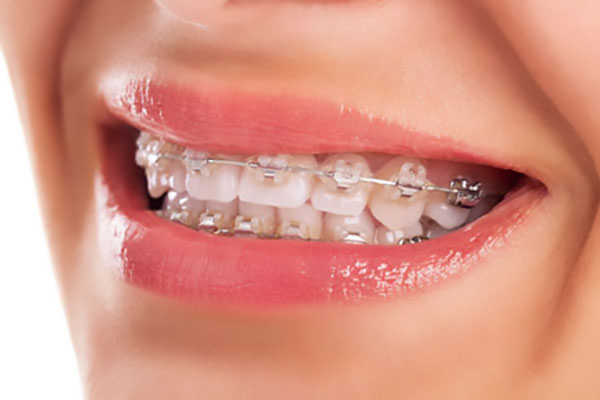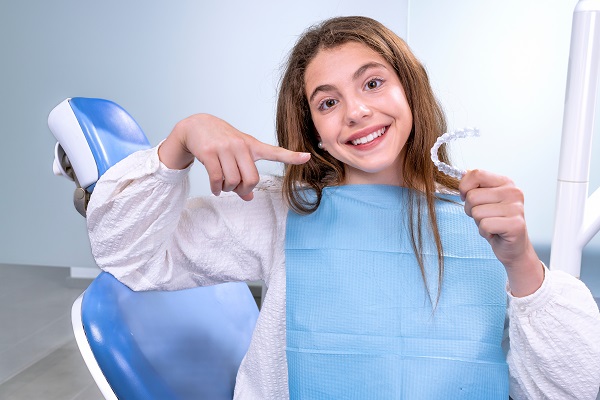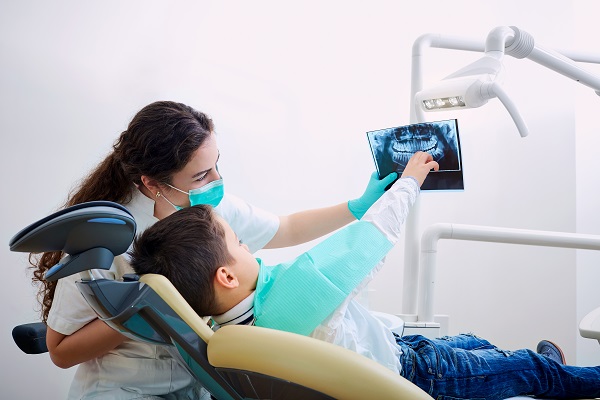Orthodontics: How Do Clear Braces Work to Straighten Your Teeth?

Many people consider the field of orthodontics to be mostly geared toward younger children, but there are numerous teenagers and adults who are living with crooked teeth, improper bites or alignment issues. It is very common, or even fashionable, for kids to sport metal braces, and choosing bright-colored rubber bands or uniquely shaped brackets is all part of the fun. However, people receiving orthodontic treatment later in life often opt for the most understated design possible. Clear braces are one potential alternative for patients seeking a less noticeable solution.
How clear braces work
Like traditional metal orthodontic appliances, clear braces use brackets and wires that are fixed onto the teeth. By exerting constant pressure, braces allow an orthodontist to adjust the position of the teeth and jaw. The goal of treatment is to make a person’s smile more aesthetically pleasing and to improve the individual’s overall dental health. Rather than rely on metal components to achieve the desired results, clear braces use alternative transparent materials and coatings that are designed to better blend in with the teeth.
Components of clear braces
The materials used to make clear braces vary depending on the options offered by an orthodontic office and the choices made by the patient. Clear plastic polycarbonate and transparent ceramic are the most common materials used to replace traditional metal braces. Colorless elastics are available for use on each bracket and anywhere else necessary. While regular metal wires are often still used, a clear coating or completely translucent wire made from a polymer composite are other alternatives for keeping the braces entirely clear.
Points to consider about clear braces
There are several advantages and disadvantages of clear braces. Here are a few aspects patients should bear in mind if they are interested in this solution.
Considering clear braces as an alternative to invisible aligners
When compared to other treatment methods used in orthodontics, clear braces offer the obvious advantage of being more discreet than traditional metal braces. While invisible aligner systems are the most inconspicuous option available, not everyone is a candidate. Aligners are limited in the problems they can adequately address, and it is necessary for patients to follow a strict regimen and stay disciplined in wearing the trays in order to see results. Clear braces are a good option for people who are unable to successfully use invisible aligners for any reason.
Preventing discoloration while wearing clear braces
One disadvantage of clear braces is the possibility of some discoloration with continued use. While both ceramic and polycarbonate are resistant to stains, the elastics used on the braces may darken due to smoking and consuming certain foods or beverages. Limiting tea, wine, coffee and some dark-colored foods may be necessary to keep clear rubber bands looking clean.
Conclusion
While the primary goal of orthodontics is to help patients achieve a beautiful, functional smile in the long run, many persons are concerned about their appearance during the time of treatment as well. Clear braces allow people to take full advantage of traditional braces while attracting far less unwanted attention.
Request an appointment here: https://www.drsallysong.com or call The Orthodontic Center Of Wayne - Dr. Sally Song at (973) 696-5220 for an appointment in our Wayne office.
Check out what others are saying about our services on Google: Read our Google reviews.
Recent Posts
Even though braces are common among teenagers, getting them is a new orthodontic experience for every patient. Teens and their parents tend to have many questions about braces and other orthodontic treatments for teens, when to get braces, and what having braces will be like. Here are some of the most common questions orthodontists hear…
The primary goal of early orthodontic treatment is to prevent and fix bite misalignments. Several causes, including genetics, the premature loss of primary (baby) teeth, and harmful oral habits (like thumb sucking) may lead to such anomalies. Orthodontic abnormalities might be congenital or occur during early childhood. Straight teeth can reduce the incidence of dental…
Invisalign® has changed how willing teenagers –– and everyone else –– are to start teeth straightening treatments. It provides an alternative to traditional metal braces that is virtually impossible to detect. Invisalign® treatments work the same way conventional braces work, the aligner trays exert a force on the patient's teeth pushing their teeth into better…
Oral health is foundational to good overall health. Through the help of an orthodontist and bite correction, difficulties with chewing or speaking can be overcome. The inability to ingest food or clearly articulate impacts both physical and mental health. Bite correction has the potential to change the course of an individual’s health and wellness.Changes in…


